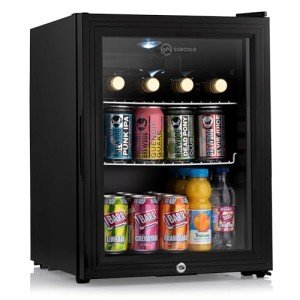The Ultimate Guide to Dual Zone Fridges: All You Need to Know
When it concerns kitchen devices, a fridge is one of the most important items you require to have. With the advancement of innovation, refrigerators have actually become more sophisticated, and one of the most recent innovations in this field is the dual zone fridge. In this post, we will explore what dual zone fridges are, their advantages, and what to consider when purchasing one.
What is a Dual Zone Fridge?
A dual zone refrigerator is a type of fridge that allows you to control the temperature of 2 different compartments separately. This implies you can set a different temperature level for the freezer and the refrigerator, and even have 2 separate refrigerator compartments with various temperatures. This function is helpful for keeping food products that require different temperature levels, such as meat, dairy, and fruits.
Benefits of Dual Zone Fridges
Dual zone fridges use numerous benefits, including:
- Improved Food Storage: With two separate compartments, you can store food items at their optimum temperatures, which assists to maintain their freshness and quality.
- Increased Flexibility: Dual zone fridges offer you the versatility to store different types of food products, such as meat, dairy, and fruits, at their required temperature levels.
- Reduced Energy Consumption: Dual zone fridges can help in reducing energy intake by allowing you to set the temperature level of each compartment separately, which implies you can turn off one compartment when not in use.
- Longer Shelf Life: By storing food items at their optimal temperatures, dual zone fridges can assist extend the shelf life of your food.
Types of Dual Zone Fridges
There are a number of kinds of dual zone fridges readily available in the market, consisting of:
- Top-Freezer Dual Zone Fridge: This kind of refrigerator has a different freezer compartment on leading and a fridge compartment at the bottom.
- Bottom-Freezer Dual Zone Fridge: This type of refrigerator has a different freezer compartment at the bottom and a fridge compartment on top.
- Side-by-Side Dual Zone Fridge: This type of fridge has 2 separate compartments, one for the fridge and one for the freezer, which are positioned side by side.
- French Door Dual Zone Fridge: This kind of refrigerator has a different freezer compartment at the bottom and a refrigerator compartment on top, with French doors that open outwards.
What to Consider When Buying a Dual Zone Fridge
When buying a dual zone fridge, there are several elements to consider, including:
- Size: Consider the size of your kitchen area and the amount of area you have readily available for the refrigerator.
- Energy Efficiency: Look for a refrigerator with a high energy efficiency score, which can help in reducing your energy costs.
- Temperature level Control: Ensure that the fridge has exact temperature control, which permits you to set the temperature of each compartment independently.
- Storage Capacity: Consider the storage capacity of the refrigerator, consisting of the number of shelves, drawers, and compartments.
- Sound Level: Some dual zone fridges can be noisy, so consider the sound level of the fridge before buying.
Frequently Asked Questions (FAQs)
Q: What is the difference in between a dual zone fridge and a single zone refrigerator?A: A dual zone fridge has two different compartments with various temperature levels, while a single zone refrigerator has just one compartment with a fixed temperature level.
Q: Can I store meat and dairy products in the exact same compartment?A: No, it's advised to store meat and dairy products in different compartments with different temperature levels to guarantee food security.
Q: Can I switch off one compartment when not in usage?A: Yes, many dual zone fridges enable you to shut off one compartment when not in use, which can help minimize energy consumption.
Q: How do I preserve my dual zone refrigerator?A: Regular cleansing, inspecting the door seals, and ensuring appropriate ventilation are important for maintaining your dual zone refrigerator.
Conclusion
Dual zone fridges are a great choice for those who want to save various types of food products at their optimum temperatures. With Energy-Saving Fridges improved food storage, increased flexibility, and lowered energy intake, dual zone fridges are an excellent addition to any kitchen area. When purchasing a dual zone refrigerator, consider the size, energy effectiveness, temperature level control, storage capacity, and sound level. With correct maintenance and care, your dual zone refrigerator can last for lots of years and offer you with fresh and healthy food.
Contrast of Dual Zone Fridge Models
Here's a comparison of some popular dual zone fridge models:
| Model | Size | Energy Efficiency | Temperature level Control | Storage Capacity | Noise Level |
|---|---|---|---|---|---|
| Samsung RF28HMEDBSR | 36 inches | Energy Star certified | Accurate temperature level control | 28 cu. ft. | 42 dB |
| LG LFX28968S | 36 inches | Energy Star licensed | Precise temperature level control | 28 cu. ft. | 40 dB |
| Whirlpool WRF989SDHZ | 36 inches | Energy Star certified | Accurate temperature level control | 28 cu. ft. | 45 dB |
| Bosch B36CD80SNS | 36 inches | Energy Star certified | Exact temperature control | 28 cu. ft. | 38 dB |
Please note that the comparison is based on the requirements of the models and may not show the real performance of the fridges.
Glossary of Terms
- Dual zone: A feature that permits you to control the temperature of two different compartments independently.
- Energy Star licensed: A score that indicates the appliance meets energy efficiency standards set by the U.S. Environmental Protection Agency.
- Exact temperature level control: A feature that permits you to set the temperature of each compartment separately and properly.
- Storage capacity: The quantity of area available for storing food items, determined in cubic feet.
- Noise level: The level of noise produced by the fridge, measured in decibels (dB).

